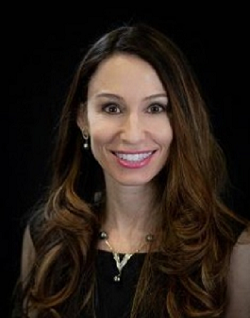
Julie A. Woodward, MD, professor of ophthalmology and chief of the oculofacial and reconstructive surgery division continues to be a leader in the field.
Woodward and colleagues compared water absorption of FDA-approved hyaluronic acid fillers, published in Dermatologic Surgery in September 2021.
The goal of this study was to provide long-term insight into an improved, tailored facial rejuvenation approach and to understand sequelae that could affect preoperative surgical planning.
Hyaluronic acid (HA) facial fillers absorb water and delayed tissue swelling after injection may take months or even years to become evident in the lower or upper eyelids, resulting in a displeasing aesthetic outcome that may require dissolving the filler with hyaluronidase. This publication is the first to attempt to identify fillers that may carry increased in vitro risk of delayed edema, although the authors stress all HA fillers carry this potential.
There were three types of fillers where the water absorption was low, thus making these good options for under eye filler. Fillers with more water absorption may be beneficial for enhancement of the lips. The results inform us about in vivo conditions and provide guidance for filler selection.
In addition to this important research, Woodward took part in the first ever clinical trial for under eye filler for FDA approval. She was invited to share the data with plastic surgeons, facial plastic surgeons, dermatologists, and physician extenders during a medical aesthetics training course in San Diego in January 2022.
Woodward is involved in research for both aesthetic and functional medicine. Her aesthetic research is primarily focused on patient safety through study of vascular anatomy, ability to dissolve facial fillers and rheologic measurements of extrusion forces that lead to improved techniques for new injectors to ensure safety when treating patients. She also conducts research for medical and surgical therapies to treat benign essential blepharospasm, a functionally blinding condition.
She serves on two medical boards, the Aesthetics Industry Association and the Benign Essential Blepharospasm Research Foundation (BEBRF). She enjoys speaking directly to the patients through lectures organized by the BEBRF.